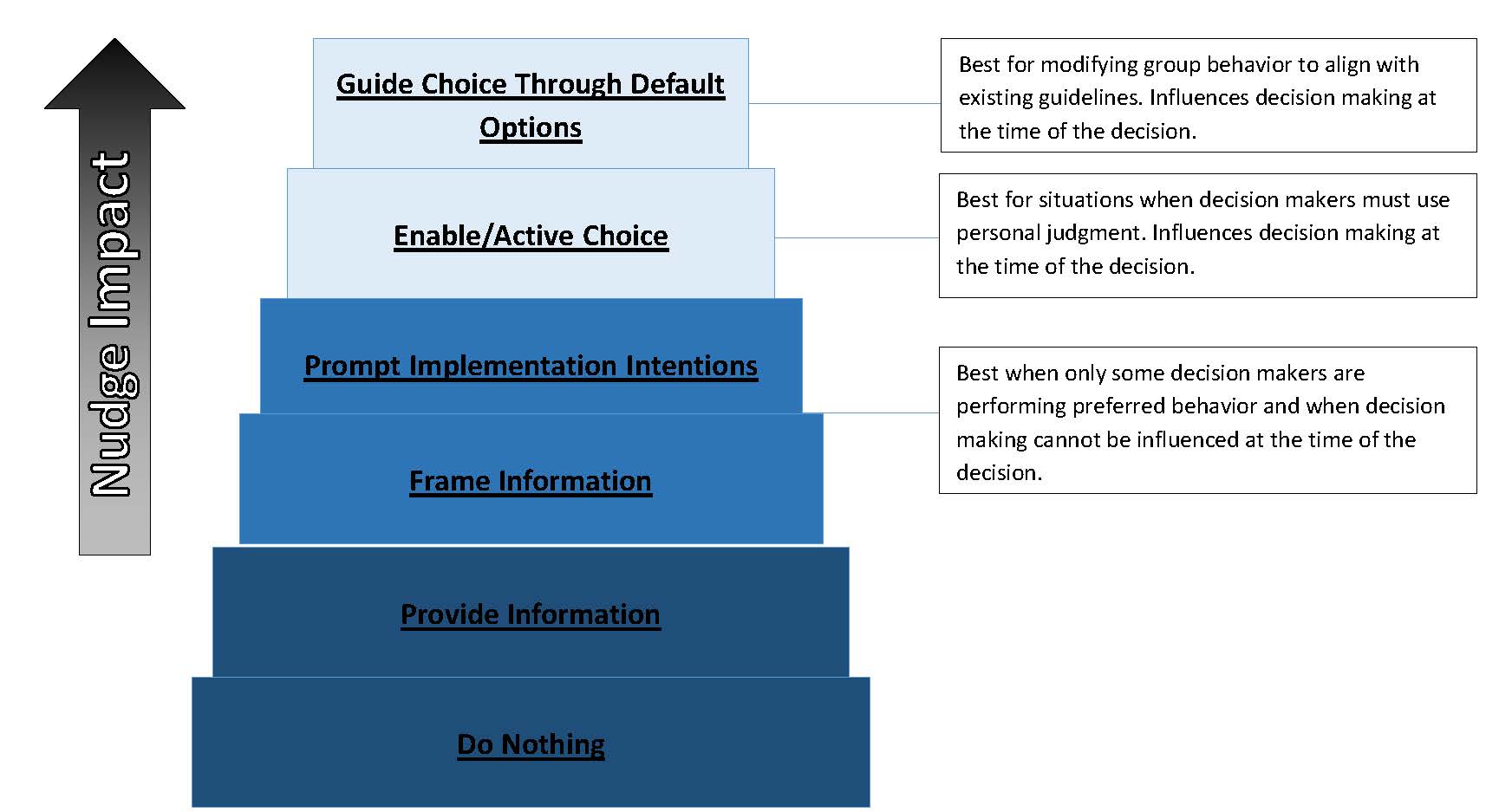Learn the basics of nudges from the Penn Medicine Nudge Unit.
What is a nudge, and why use nudges in health care?
A nudge is a change in the way choices are presented or information is framed that is meant to guide or motivate decision-making. Human behavior is the final common pathway for most advances in medicine. No matter how effective a medication, protective a vaccine, or beneficial a lifestyle modification, clinicians must recommend them, and patients must engage with them to achieve improvements in health. Our decisions and behaviors are heavily influenced by the environment in which they occur. For example, minor changes to the way choices are presented and information is framed within the electronic health record (EHR) can lead to significant differences in the way clinicians order tests and treatments. In addition, social networks and norms influence how individuals eat and exercise. Yet, in many cases, these influences go unnoticed or are not given much thought.
What needs to be present for a nudge to work?
According to the Fogg Behavior Model, nudges should combine three aspects for success: They should prompt action, increase motivation, and make action easier.
What makes a nudge different from laws, rules, or mandates?
People always have a choice – and can decide to do or not do the suggested behavior.
What types of problems are best suited for a nudge?
We focus on behaviors that are concordant with evidence-based practices and try to make it easier for clinicians and patients to do the right thing. Many of our routine practices in health care delivery are influenced by the nature of how choices are presented. Subtle changes to choice architecture can have an outsized impact on medical decision-making.
How do we design a nudge?
We develop nudges by understanding the behavioral barrier to action and leveraging cognitive heuristics, engaging stakeholders through co-design, using data to inform design, and designing for integration into workflow.
How can nudges be delivered?
At the Penn Medicine Nudge Unit, we design, deploy, and evaluate scalable and low-cost solutions to effect behavior change. Sample mechanisms of delivery include the EHR, messages to providers and/or patients, and promotional material in physical spaces.
How do we know the nudge was successful?
We measure a change in the intended behavior and improvement in patient outcomes and health care delivery metrics. We also strive to ensure that nudges improve care team experience, patient experience, choice architecture, and equity.
Where can I see some examples?
Visit our digital portfolio to read about some of our successful nudges, including:
- Default options to decrease unnecessary imaging for cancer patients
- Peer comparison feedback to increase statin prescribing
- Default options to increase cardiac rehabilitation referral rates
- Default options to decrease opioid prescribing durations
- Default settings to improve hepatitis C screening
- Nudges plus machine learning algorithms to increase serious illness conversations
Learn more about the Nudge Unit on our website.
